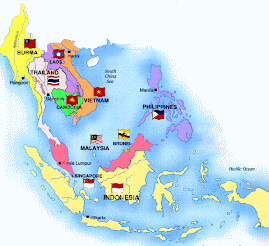CHARACTERIZATION OF OIL PALM EMPTY FRUIT BUNCH AND RICE HUSK BIOCHARS AND THEIR POTENTIAL TO ADSORB ARSENIC AND CADMIUM
"Biochar as a new soil amendment has a potential in controlling the fate of trace elements in the soil system. However, the production of biochar from different feedstocks and pyrolysis conditions resulted in variable biochar properties which have an influence on trace elements availability. The experimental works are focused on physical and chemical properties of biochars produced from Empty Fruit Bunch (EFB) and Rice Husk (RH) as heavy metals adsorbents. The morphology of EFB biochar comprise rigid structure with uniform pores size. The surface area of biochars ranged between 23.22-46.32 m2 /g, dominated with mesopores. The chemical characterization of biochars revealed high carbon content in EFB biochar compared to RH biochar (54.08 and 7.78%). Both biochars are alkaline in nature (>pH 9) and contain substantial amounts of N, P, K, Ca and Mg. Fourier transform infra-red spectra showed the heterogenic functional groups on EFB biochar surface and domination of silica content in RH biochar. The batch experiment was employed to determine the adsorption capacity of these biochars for As and Cd. The adsorption data were fitted well in Langmuir isotherm with high correlation coefficient (R>0.9) for As and Cd. The qmax of EFB biochar for As and Cd was higher than RH biochar. The q of EFB biochar was 0.4240 and 15.1515 mg g-1 for As and Cd, respectively. In contrast, the qmax of RH biochar for As and Cd was only 0.3522 and 3.1908 mg g-1. The results show that EFB biochar and RH biochar have potentials as good sorbent for As and Cd. Therefore, it can be suggested that the application of these biochars may possibly reduce the trace elements availability in the contaminated soil."
Norazlina Abu Sari, Department of Soil Science, Faculty of Plantation and Agrotechnology, Universiti Teknologi MARA, 77300 Merlimau, Melaka, Malaysia
Che Fauziah Ishak and Rosenani Abu Bakar, Department of Land Management, Faculty of Agriculture, Universiti Putra Malaysia, 43400 Serdang, Malaysia
Link to the publication
River Bend and the Gumbo of Gloom
-
"*Louisiana's heat is not always measured in Scovilles**.*"
Chapter 1: A Gumbo of Gloom
*Well, sir, let me tell you,* that naught-minus-twenty ice storm...
3 days ago





No comments:
Post a Comment